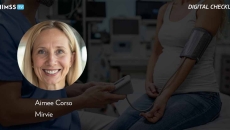Population and Public Health
Food Allergy Nursing Association educates nurses about the emerging health concern so they can deliver adequate care and better advocate for patients, says Olga Kagan, FANA president and CEO, and 2025 Changemaker Award recipient.
The magic is taking the results from a single community to create the same model for the nation, says Danish Qureshi, CEO of Zarminali Pediatrics.
Artificial intelligence, data collection and low-latency video are among the technologies recognized by the health system.
Mirvie, a pregnancy-focused women's health company, has a new offering: a direct-to-consumer test to predict preeclampsia before it occurs using RNA analysis. Aimee Corso, senior vice president of growth at the company, explains.
Also, Western Australia has expanded access to its virtual emergency department.
A partnership that aims to provide culturally sensitive care is reducing hospital stays by leveraging digital tools that improve access to treatment, says Renee Broadbent, SoNE Health's chief information officer.
The state's MOTHeRS Project has helped virtually connect high-risk pregnant women in rural areas to OB-GYN, mental health and diabetes care. Dr. Sy Saeed of the North Carolina Statewide Telepsychiatry Program explains how.
HIMSS CEO Hal Wolf offers a sneak peek of the conference, scheduled to take place 10-12 June in Paris. He discusses the current technology and policy landscape on the continent for AI and other healthcare IT applications.
It improves efficiency too, says Scott Wilson, AVP of HHS enterprise care solutions. Amid labor shortages, health systems can optimize staffing and manage costs through nursing telehealth and hospital at home programs.
For Davies Awardee Dr. Robert Jarve and his team from Corewell Health, studying data from a clinic serving high-risk Medicaid patients helped them understand what's driving most of the clinic's ED utilization.









